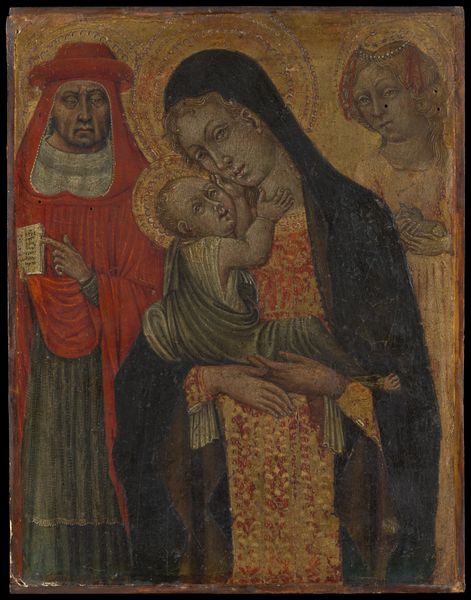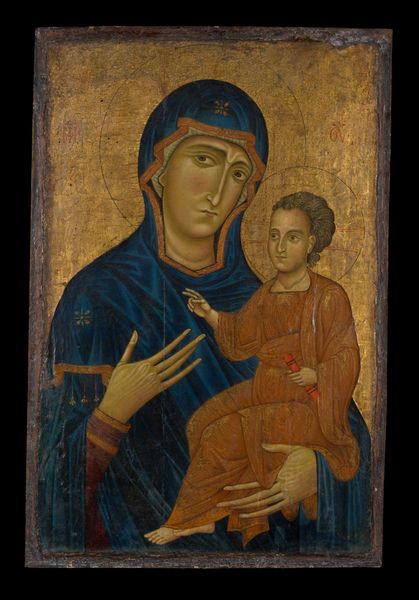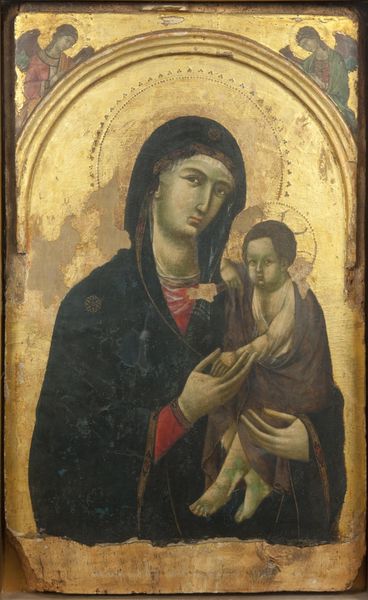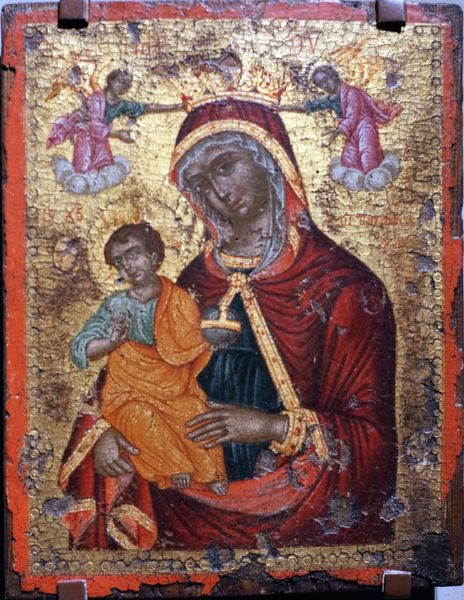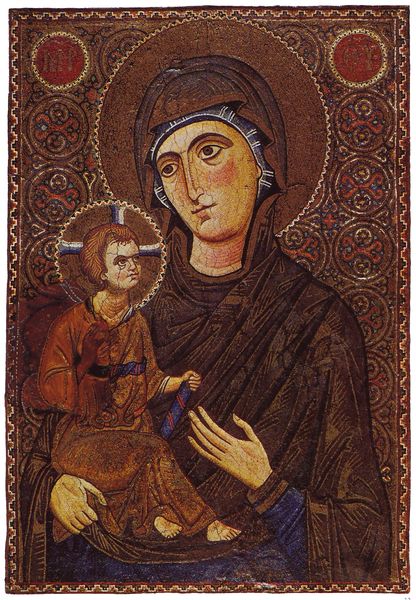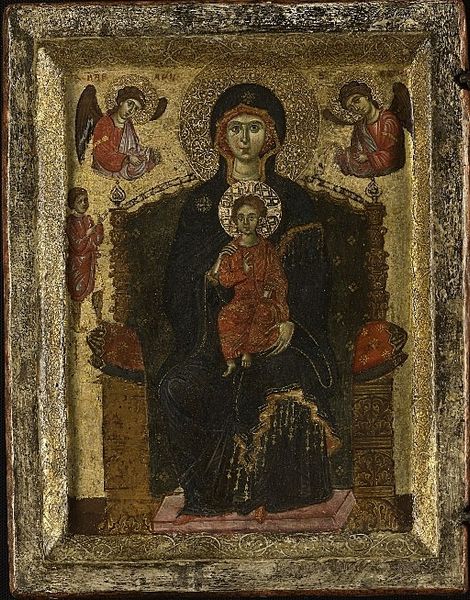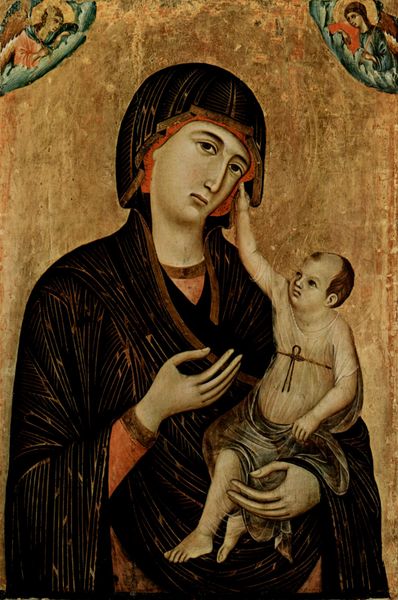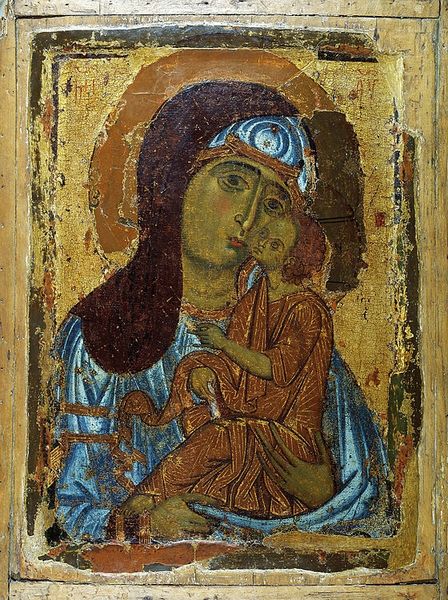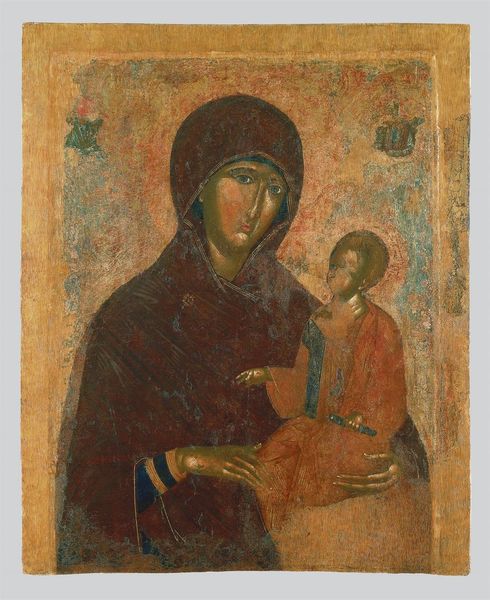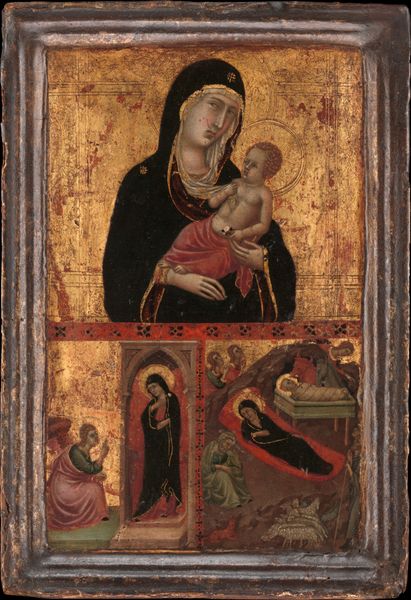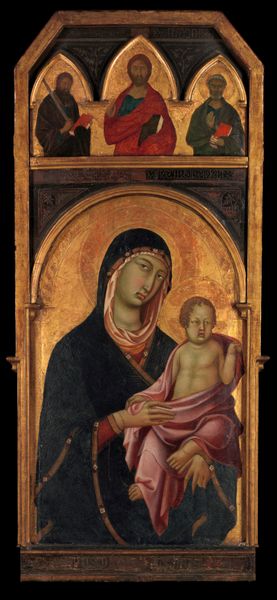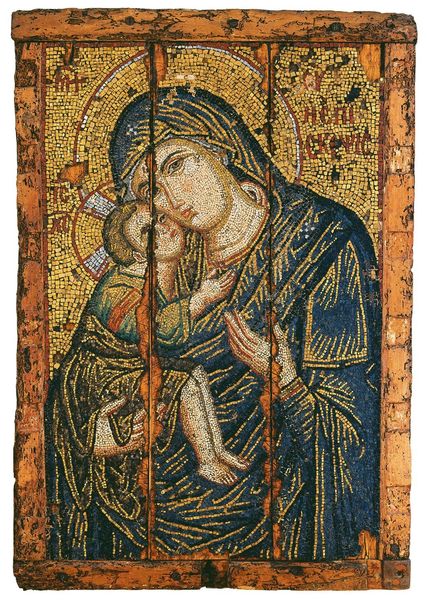
Icon of the Virgin and Child, Hodegetria variant 1200 - 1300
0:00
0:00
panel, tempera, painting
#
portrait
#
byzantine-art
#
medieval
#
panel
#
tempera
#
painting
#
figuration
#
child
#
medieval-art
Dimensions: 10 × 7 1/4 × 1/2 in. (25.4 × 18.4 × 1.3 cm)
Copyright: Public Domain
This Icon of the Virgin and Child, likely made around the 13th century by a Byzantine or Crusader artist, is painted in egg tempera on a wood panel. The rigid support of the wood, carefully prepared with gesso, provides a stable ground for the delicate layers of pigment. Notice how the artist skillfully built up the image through thin, translucent glazes, allowing light to interact with the colors and create a luminous effect. This was a laborious process, demanding patience and precision. The artist would have ground their own pigments from minerals and plants, mixed them with egg yolk, and applied them with fine brushes. Consider the social context of this work. Icons like these were not simply paintings; they were sacred objects believed to possess divine power. Their production was often associated with monastic workshops, where artists worked collaboratively, following established traditions and techniques. The materials used, and the careful, deliberate process of creating the icon, all contributed to its spiritual significance. Understanding the materials, making, and context allows us to fully appreciate the meaning and significance of this work, challenging conventional divisions between art and craft.
Comments
No comments
Be the first to comment and join the conversation on the ultimate creative platform.
